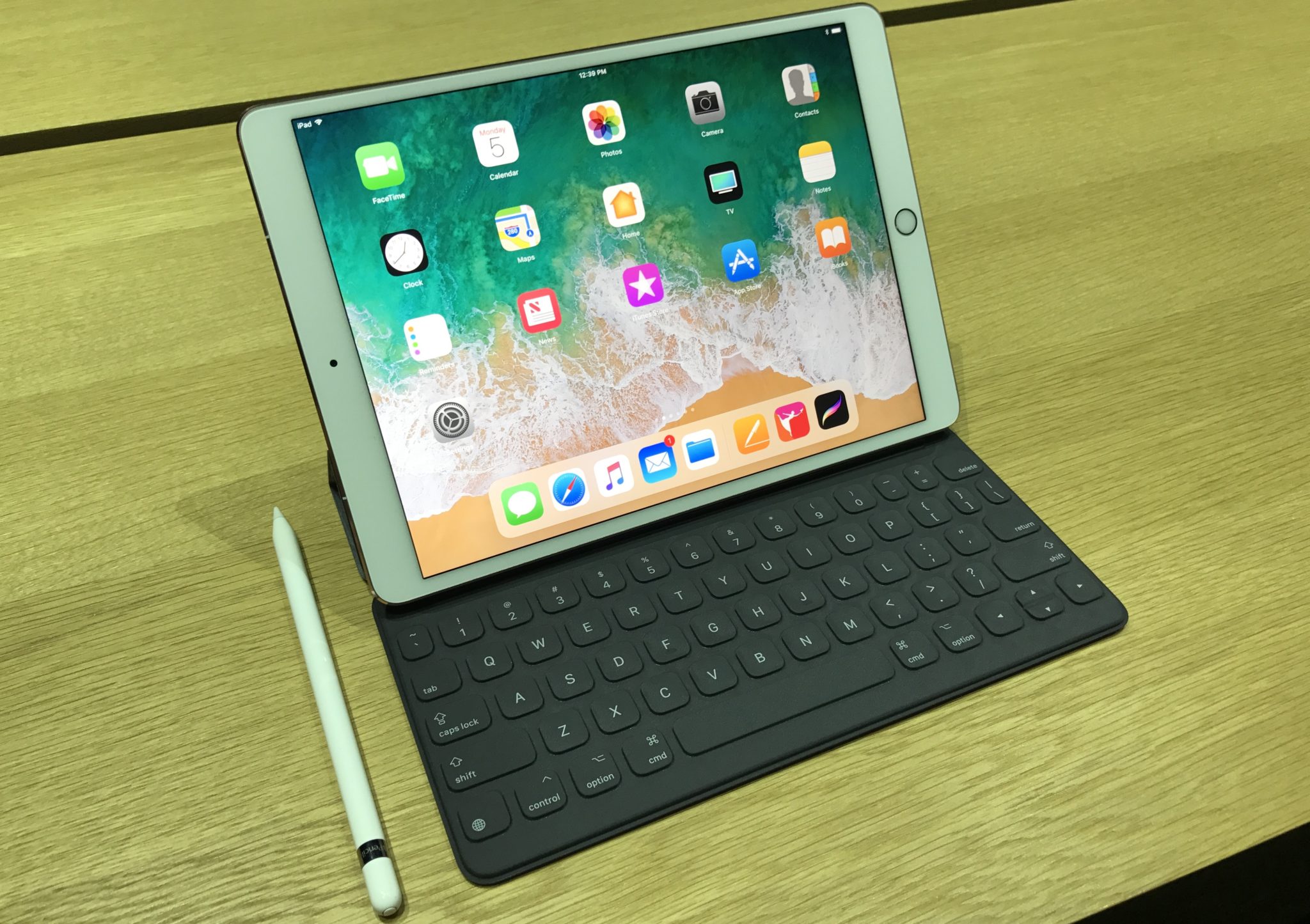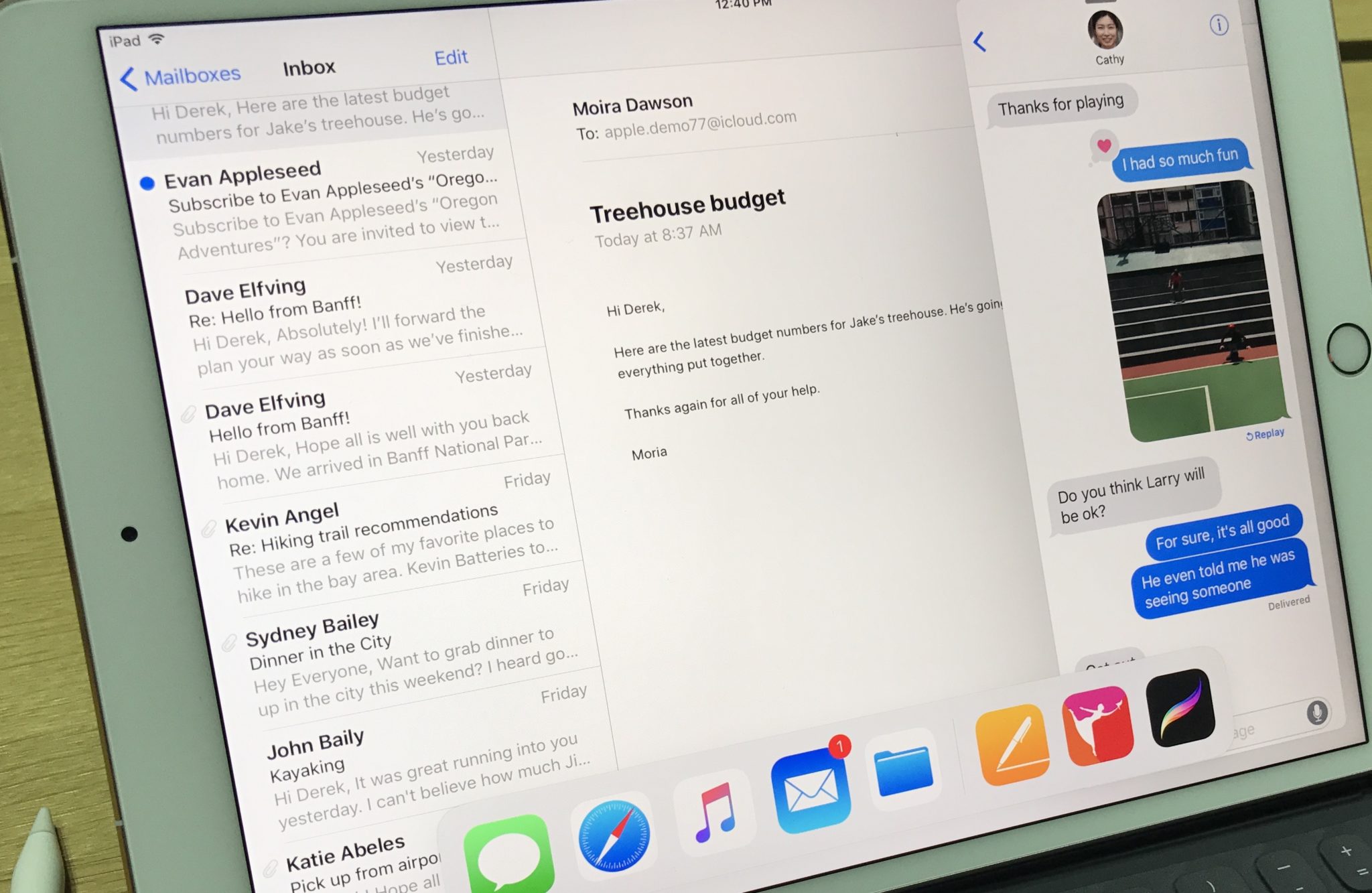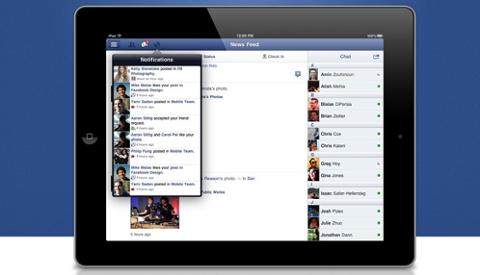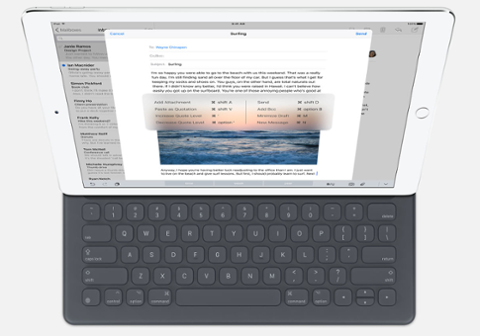[caption id="attachment_142098" align="aligncenter" width="4013"]

iPad Pro 10.5-inch WWDC 2017[/caption] The iPad is back, and Apple is
serious about it this time around. If you haven't been paying attention to the tablet space, there’s good reason. It was tired, and lacking, but Apple just revived it in a big way –
especially for developers. As a result of the malaise, iPad sales have been slumping for some time. The iPad Pro renewed interest, but had no real effect on sales. Apple Pencil was enticing, but limited to the big Pro. A smaller iPad Pro came later, but it seemed like a half-step for Apple; why get an iPad mostly similar to an Air just to use the Pencil? In March, Apple introduced an entry-level iPad. For $350, you could get all the basic iPad functionality many had come to love. And now, at WWDC 2017, Apple has officially introduced a new 10.5-inch iPad Pro. If you hadn’t noticed, the iPad is now either Pro or entry-level. This bent toward Pro changes the paradigm. With
iOS 11, the software on those iPads will reflect that. New features such as drag-and-drop and the ability to manage files makes it a true device for professionals. While the 12.9-inch iPad Pro was marketed towards creatives, iOS 11 proves it’s a solid choice for anyone interested in just plain doing more with a tablet-first device. Of course, the term ‘pro’ is subjective, and the iPad still can’t appease many people. Developers won’t be able to (or want to; let’s just not go there today) use an iPad to write apps, so the Mac isn’t going away. Professionals can edit images on an iPad, but for real pro-level work, a giant screen is still best. [caption id="attachment_142099" align="aligncenter" width="3086"]

iPad Pro Dock WWDC 2017[/caption]
iPad, Mac and the Future of Productivity
Let’s not mince words about getting things done: the Mac is still the best productivity machine Apple makes. That won't change in the foreseeable future (and the company is also doubling-down on Macs, as well, with updates to its whole line). The new iMac Pro is a beastly replacement for the all-but-discontinued Mac Pro. MacBooks Pro are top of their class, and have been updated to Intel’s Kaby Lake CPU. For the most productive (and media-consuming) among us, an actual computer is still the best choice, and might always be. The general audience – the ones who would rather have one device that can do it all but don’t
want to carry a proper computer around – is where the iPads Pro will be made or broken. This crowd is made up of Excel champions and power emailers, the kind who toss around “Send me a PDF” and “Let me check my calendar” several times a day. This is also the crew who want to play time-waster games, check Facebook and type long-winded iMessage responses while looking like they’re sending those precious PDFs back and forth. But macOS doesn’t do all of that, per se. Games on iOS are better, and the full-fledged Excel client is sort of overblown (and slow) for most tasks. For them, iOS 11 on iPad will be macOS Lite. Drag and drop is a massive step in that direction, and just plain seems to work well on the larger screen. It also supports multi-finger touch, so users can add to a collection with their other hand during a drag session. The dock is very familiar and Mac-like, which serves a few purposes: it makes multitasking faster, and adds desktop class to the iPad Pro. [caption id="attachment_142100" align="aligncenter" width="3456"]

iPad Pro Dock And Window App WWDC 2017[/caption] The dock appears when users slide up from the bottom of the screen, and allows them to select apps to open in a hovering side-hugging window, or into split screen mode. It also works with drag and drop; if a user selected text in Pages to copy to an email, they’d simply drag the selected text to the Mail icon in the dock, which would spin up the Mail app and allow them to carry on with dropping into a message. It’s secure, too. Apple sees drag and drop as having four stages. A long-press initiates a ‘copy’ of text, images, URLs and such. Drag is when a user moves their finger without lifting, while ‘set down’ happens after the user has lifted their finger from the screen. If they lift up while in the same app they copied from, the session is terminated; if it’s a new app, that receiving app has access to the data (like photos). That’s the only time data transfer happens, and it’s siloed to the receiving app. Developers can also choose what actions their app can do in drag and drop scenarios. If your app is a quick file transfer service, there’s no reason to send data; it all goes away once the transfer is completed, anyway. In that case, you can choose to have your app be receive-only. Developers can also customize animations for selecting, dragging and dropping files. This feature is not only powerful; it also has personality. Drag and drop is mentioned in 11 sessions and labs at WWDC this year, with five of them dedicated to the feature. It’s both the delineation between iOS of old for tablets and the tie that binds iPads Pro to their Mac counterparts as productivity machines. Developers who took the iPad lightly should reconsider it; the platform for Apple's tablet is mature, and users will soon find that out.
 iPad Pro 10.5-inch WWDC 2017[/caption] The iPad is back, and Apple is serious about it this time around. If you haven't been paying attention to the tablet space, there’s good reason. It was tired, and lacking, but Apple just revived it in a big way – especially for developers. As a result of the malaise, iPad sales have been slumping for some time. The iPad Pro renewed interest, but had no real effect on sales. Apple Pencil was enticing, but limited to the big Pro. A smaller iPad Pro came later, but it seemed like a half-step for Apple; why get an iPad mostly similar to an Air just to use the Pencil? In March, Apple introduced an entry-level iPad. For $350, you could get all the basic iPad functionality many had come to love. And now, at WWDC 2017, Apple has officially introduced a new 10.5-inch iPad Pro. If you hadn’t noticed, the iPad is now either Pro or entry-level. This bent toward Pro changes the paradigm. With iOS 11, the software on those iPads will reflect that. New features such as drag-and-drop and the ability to manage files makes it a true device for professionals. While the 12.9-inch iPad Pro was marketed towards creatives, iOS 11 proves it’s a solid choice for anyone interested in just plain doing more with a tablet-first device. Of course, the term ‘pro’ is subjective, and the iPad still can’t appease many people. Developers won’t be able to (or want to; let’s just not go there today) use an iPad to write apps, so the Mac isn’t going away. Professionals can edit images on an iPad, but for real pro-level work, a giant screen is still best. [caption id="attachment_142099" align="aligncenter" width="3086"]
iPad Pro 10.5-inch WWDC 2017[/caption] The iPad is back, and Apple is serious about it this time around. If you haven't been paying attention to the tablet space, there’s good reason. It was tired, and lacking, but Apple just revived it in a big way – especially for developers. As a result of the malaise, iPad sales have been slumping for some time. The iPad Pro renewed interest, but had no real effect on sales. Apple Pencil was enticing, but limited to the big Pro. A smaller iPad Pro came later, but it seemed like a half-step for Apple; why get an iPad mostly similar to an Air just to use the Pencil? In March, Apple introduced an entry-level iPad. For $350, you could get all the basic iPad functionality many had come to love. And now, at WWDC 2017, Apple has officially introduced a new 10.5-inch iPad Pro. If you hadn’t noticed, the iPad is now either Pro or entry-level. This bent toward Pro changes the paradigm. With iOS 11, the software on those iPads will reflect that. New features such as drag-and-drop and the ability to manage files makes it a true device for professionals. While the 12.9-inch iPad Pro was marketed towards creatives, iOS 11 proves it’s a solid choice for anyone interested in just plain doing more with a tablet-first device. Of course, the term ‘pro’ is subjective, and the iPad still can’t appease many people. Developers won’t be able to (or want to; let’s just not go there today) use an iPad to write apps, so the Mac isn’t going away. Professionals can edit images on an iPad, but for real pro-level work, a giant screen is still best. [caption id="attachment_142099" align="aligncenter" width="3086"]  iPad Pro Dock WWDC 2017[/caption]
iPad Pro Dock WWDC 2017[/caption]
 iPad Pro Dock And Window App WWDC 2017[/caption] The dock appears when users slide up from the bottom of the screen, and allows them to select apps to open in a hovering side-hugging window, or into split screen mode. It also works with drag and drop; if a user selected text in Pages to copy to an email, they’d simply drag the selected text to the Mail icon in the dock, which would spin up the Mail app and allow them to carry on with dropping into a message. It’s secure, too. Apple sees drag and drop as having four stages. A long-press initiates a ‘copy’ of text, images, URLs and such. Drag is when a user moves their finger without lifting, while ‘set down’ happens after the user has lifted their finger from the screen. If they lift up while in the same app they copied from, the session is terminated; if it’s a new app, that receiving app has access to the data (like photos). That’s the only time data transfer happens, and it’s siloed to the receiving app. Developers can also choose what actions their app can do in drag and drop scenarios. If your app is a quick file transfer service, there’s no reason to send data; it all goes away once the transfer is completed, anyway. In that case, you can choose to have your app be receive-only. Developers can also customize animations for selecting, dragging and dropping files. This feature is not only powerful; it also has personality. Drag and drop is mentioned in 11 sessions and labs at WWDC this year, with five of them dedicated to the feature. It’s both the delineation between iOS of old for tablets and the tie that binds iPads Pro to their Mac counterparts as productivity machines. Developers who took the iPad lightly should reconsider it; the platform for Apple's tablet is mature, and users will soon find that out.
iPad Pro Dock And Window App WWDC 2017[/caption] The dock appears when users slide up from the bottom of the screen, and allows them to select apps to open in a hovering side-hugging window, or into split screen mode. It also works with drag and drop; if a user selected text in Pages to copy to an email, they’d simply drag the selected text to the Mail icon in the dock, which would spin up the Mail app and allow them to carry on with dropping into a message. It’s secure, too. Apple sees drag and drop as having four stages. A long-press initiates a ‘copy’ of text, images, URLs and such. Drag is when a user moves their finger without lifting, while ‘set down’ happens after the user has lifted their finger from the screen. If they lift up while in the same app they copied from, the session is terminated; if it’s a new app, that receiving app has access to the data (like photos). That’s the only time data transfer happens, and it’s siloed to the receiving app. Developers can also choose what actions their app can do in drag and drop scenarios. If your app is a quick file transfer service, there’s no reason to send data; it all goes away once the transfer is completed, anyway. In that case, you can choose to have your app be receive-only. Developers can also customize animations for selecting, dragging and dropping files. This feature is not only powerful; it also has personality. Drag and drop is mentioned in 11 sessions and labs at WWDC this year, with five of them dedicated to the feature. It’s both the delineation between iOS of old for tablets and the tie that binds iPads Pro to their Mac counterparts as productivity machines. Developers who took the iPad lightly should reconsider it; the platform for Apple's tablet is mature, and users will soon find that out. 


